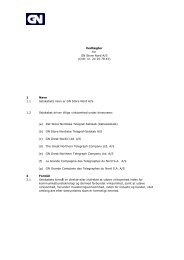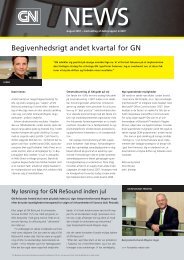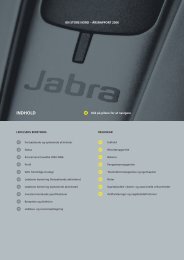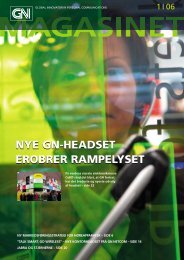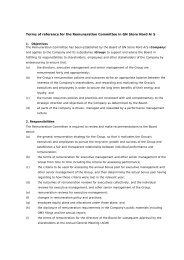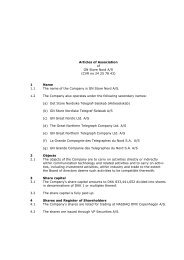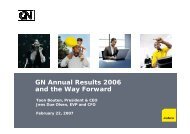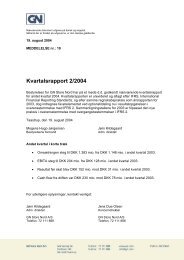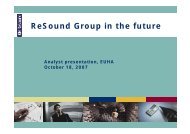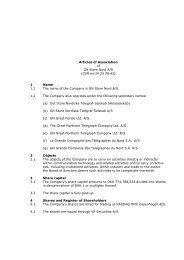Create successful ePaper yourself
Turn your PDF publications into a flip-book with our unique Google optimized e-Paper software.
RECORD!<br />
The unpacking scene shows how the individual headset<br />
parts should be packaged and how much of the headset<br />
should be preassembled. The tests show the order in<br />
which the components are unpacked and whether users<br />
follow the instructions. The results are then used to design<br />
the packaging and to mark the different parts of the<br />
headset. The second example shows that what may be intuitive<br />
to the product developers during the design phase<br />
may not be intuitive to the user.<br />
“One very important area is instructions and user<br />
guides. Are they easy to read? Do users follow them?<br />
And do the users assemble and install the headset the<br />
way it was intended? We’ve gotten a lot of good ideas<br />
for improvement this way,” she says.<br />
Without Filter<br />
Non-interference is a basic principle when you observe<br />
users. They must do exactly what they would have done<br />
if they weren’t being observed.<br />
“We fi lm the entire process, jotting down notes as we<br />
go along, and ask detailed questions afterwards. That<br />
way, we get different input than we would from focus<br />
Daily Use<br />
Studies to follow up on the everyday use of a headset, typically a month after it<br />
was bought.<br />
How do users wear the headset? Is it easy for them to put on their head or ear?<br />
Do users wear the headset in a different way now than they did at the start?<br />
How do users operate the headset during a phone call? Have they changed the<br />
settings? What functionalities do they use?<br />
Is the sound satisfactory? Do they use the charger?<br />
Did the user save the box and the user guides? Have they used the user guide?<br />
groups, for example, where the things that come out<br />
are the user’s acknowledged needs and conscious behavior.<br />
Using the observation method, we experience real behavior<br />
directly, without a fi lter,” explains Kristensen.<br />
Field Work<br />
Since 2003, <strong>GN</strong> Netcom has completed more than 100<br />
user studies on users in Germany, the UK, Sweden, Denmark<br />
and the United States. In many cases, design department<br />
staff or the person in charge of the user guide sit in<br />
on the interviews to get a fi rst-hand impression of users’<br />
everyday situations and experiences with their <strong>GN</strong> Netcom<br />
headsets. The results of the many user tests are reported to<br />
all the groups and departments involved at <strong>GN</strong> Netcom, for<br />
example through workshops, to make sure that the results<br />
are used in the ongoing development efforts.<br />
“So far, we’ve used observation studies in selected projects,<br />
but with the good results we’ve been getting, we will<br />
be using this method regularly in the various stages of the<br />
development process so our design and development efforts<br />
will be even more fi rmly rooted in the everyday user<br />
situation,” says Kristensen.<br />
Current Products<br />
User studies of both current and new users, with an emphasis on packaging,<br />
user guide, assembly, connection and operation, just like in user studies of prototypes<br />
and everyday use. These studies show whether there is a need for more<br />
adjustments to current products, and they provide inspiration for new products<br />
and functionalities.<br />
<strong>GN</strong> Magazine 1 l 06<br />
19




